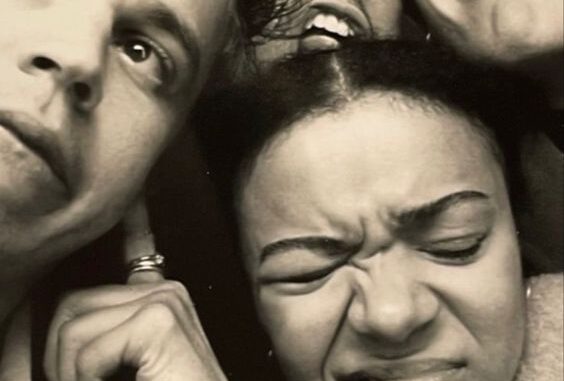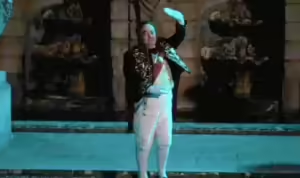
EXCLUSIVE: Express.co.uk spoke to Professor Charles Upchurch from Florida State University about being queer in the Georgian era.
Queen Charlotte: A Bridgerton Story is going down a storm with audiences across the globe after landing on May 4 on Netflix.
Telling a fictional version of the epic and tragic romance between Queen Charlotte (played by India Amarteifio) and King George III (Corey Mylchreest), the show has had viewers swooning.
However, another minor romance that has caught fans’ imaginations is the love story between the King’s man Reynolds (Freddie Dennis) and the Queen’s man Brimsley (Sam Clemmett) in the Bridgerton prequel series.
Audience members were left heartbroken after the older Brimsley (Hugh Sachs) was seen dancing by himself in a cut away from the happy couple together to just his solitary figure, suggesting the relationship with Reynolds had come to an end.
In an exclusive interview with Express.co.uk, Professor Charles Upchurch said evidence of queer life in the Georgian period was “abundant” once people realized “the ways in which it was talked about without being obvious”.
He continued: “In addition to court cases and newspaper reports, there are veiled references to same-sex desire in everything from William Hogarth’s Marriage A-la-Mode series to popular images displayed in print shop windows.”
However, the cost of love came at a high price with execution for sodomy in London.
Still, the academic stress law and justice were very different during this era with even minor theft carrying the death penalty.

These extreme punishments were supposed to act as a deterrent given there was “little infrastructure for policing or censorship”.
Professor Upchurch added: “The vast majority of illegal behavior went unpunished.”
importantly, the academic said public and private views towards homosexuality differed. People called out sodomy in public spheres and avoided discussing it, but behind closed doors the penalty was thought to be far too harsh with the likes of philosopher and legal reformer Jeremy Bentham believing the punishment should be lessened.
For a romance like Brimsley and Reynolds’ to actually take place in reality would have been tricky.
“It was difficult, with a key issue being privacy. The homes of the poor were crowded, and those of the better off had servants as well as family members,” he said.
“Ongoing relationships might be masked as friendships or employment relationships, but suspicious behavior would lead to interventions by family or the community, if not the state.”
Class, of course, had a bearing on how easy it was to hide queer romances with Professor Upchurch saying “wealthier men had more options”, which could include taking “extended trips to the continent” with their male lovers.
The cited academic William Beckford, who for a while continued to live in the UK and hold a seat in parliament after his same-sex desires became the subject of wider speculation.
Reflecting on those from the lower classes having same-sex relationships, he said: “Poorer men might find certain community London public houses or in furtive moments taken from their everyday lives. Evidence suggests that despite the law, an unwanted advance might be met with a rebuke or a shove, rather than sexually involving the police.”
But it seems money afforded people more freedom, particularly royalty and aristocrats.
Professor Upchurch said: “Rumours circulated in the 1810s about the Duke of Cumberland and one of his male servants who had lived in St. James’s Palace.
“James I’s public attention to his male favorites was remembered in the Georgian era, with Bentham referencing it in his arguments for ending the state punishment of sodomy.”
So, it seems a romance like Brimsley and Reynolds’ could have very well existed and as depicted in Queen Charlotte: A Bridgerton Story this would happen through clandestine encounters under the cover of their employment.
